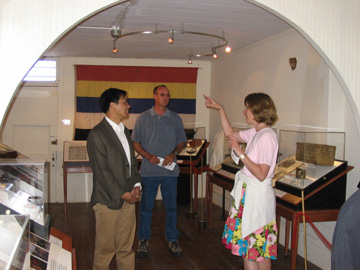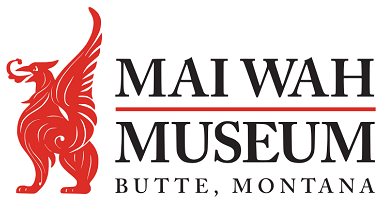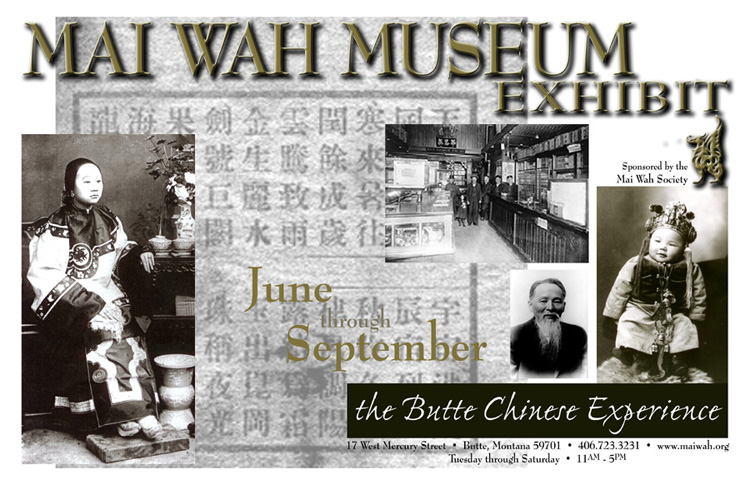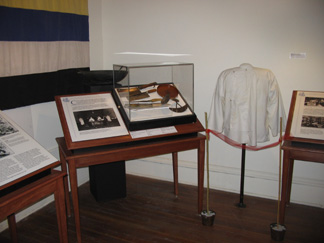The Butte Chinese
The Butte Chinese Experience exhibit, in the Museum’s Mai Wah Hall, chronicles the immigration of thousands of Asians who came to Montana and the inland west between 1860 and 1940. Brought by sail and steam ships to Seattle and other points on the west coast, they traveled to Montana by foot, mule pack train, and later by train to Montana. They were lured to the remote inland west by the promise of wealth due to the mining activity in the area and the potential for lucrative trade.
Historical Background
Between 1850 and 1900, about 250,000 Chinese came to America and thousands ended up in Montana to dig for gold and to help build railroads that ensured the prosperity of the remote state. Today, even though in some mining camps Chinese outnumbered Euro-Americans, few traces remain of their presence.
In the 1870 census, 10 percent of Montana’s residents, almost 2,000, were Chinese. Chinatowns evolved in the larger mining and railroad settlements. Some, like Butte’s Chinatown, grew to have more than 2,000 living there by 1910. For a few decades, Butte thrived as a metropolis with a population of nearly 100,000. From 1880 until the late 1920s, the Chinatown was a bustling area packed with dozens of businesses that sold Chinese and Japanese dry goods and foods, herb shops, gambling houses, noodle parlors, and laundries. The 1914 Butte city directory lists 62 Chinese businesses, including four physicians who practiced herbal medicine. A Chinese Baptist Mission ministered to the Christian population within Chinatown, almost directly across the street from the Mai Wah.
The Experience
The exhibit emphasizes the successful efforts of individuals and families to establish themselves and make a new home in a remote land similar to immigrants from other parts of the world, with one important exception: US citizenship was denied to Chinese immigrants due to discriminatory exclusionary laws.
Visitors walk through a series of displays that include photos, artifacts and interpretive text that depict the day-to-day life of the Chinese immigrants who made Butte their home. From aggressive union-led boycotts to fireworks and parades, the Butte Chinese Experience covered the range of metropolitan living. Learn about Chinese tongs, family associations, and how their disagreements could erupt into tong wars. The game of keno was devised in Butte, evolving from Chinese lotteries. Cookware, clothing, and more give you a feel for real life in Butte’s Chinatown.
The Butte Chinese Experience presents a comprehensive look at a significant group of immigrants and pioneers who helped to bring the amenities of civilization (both western and eastern) to a remote and unsettled part of the Montana frontier.


